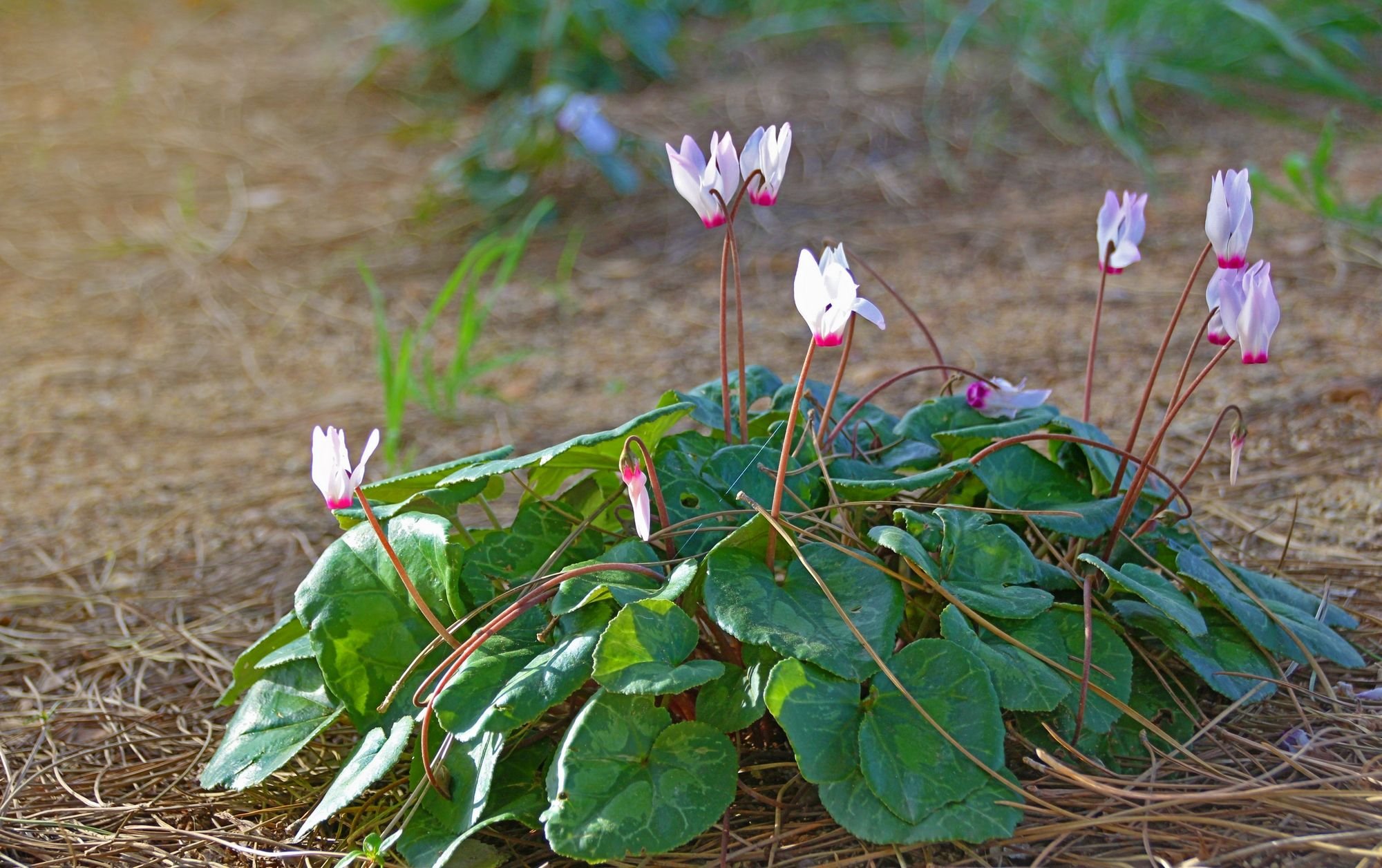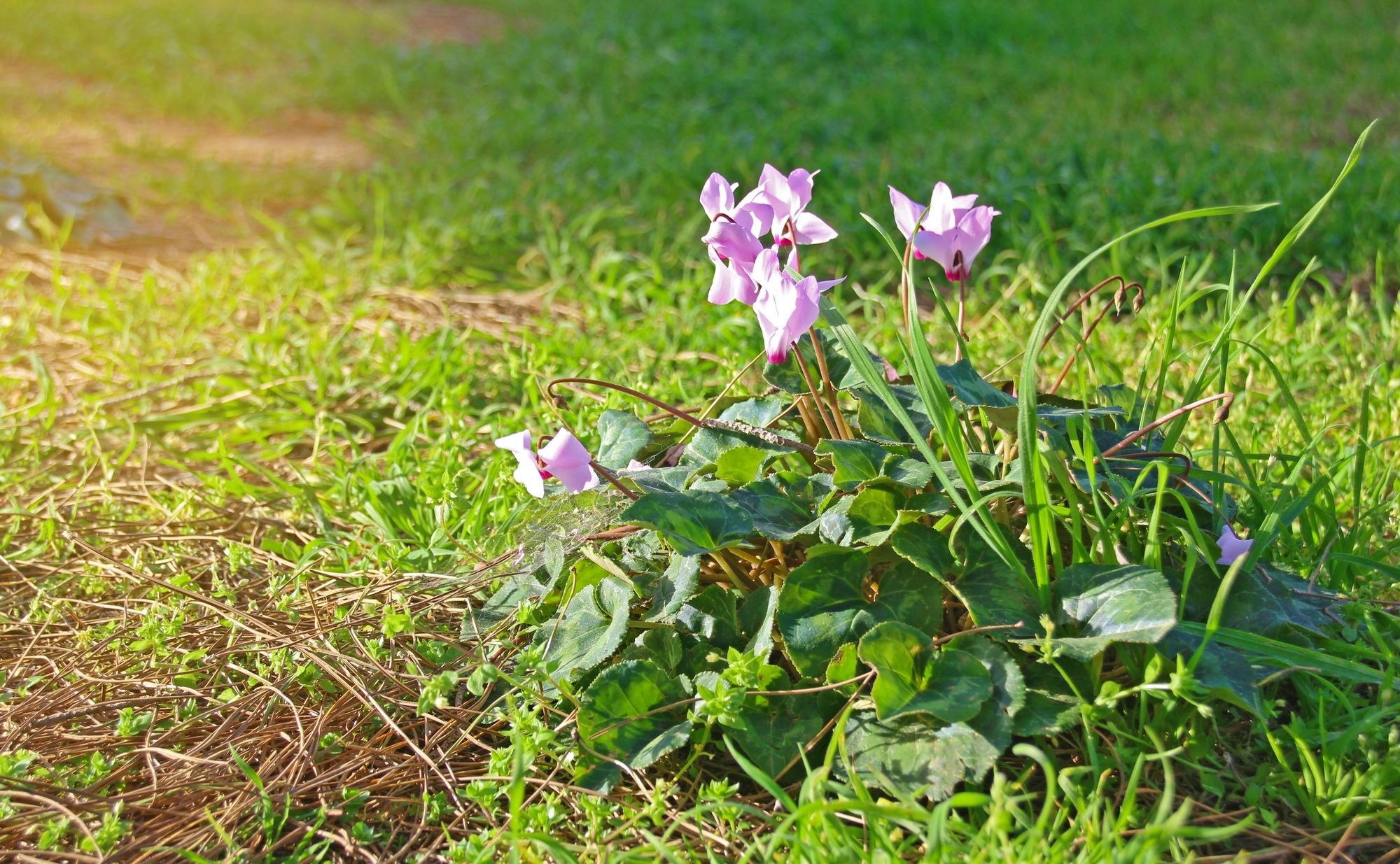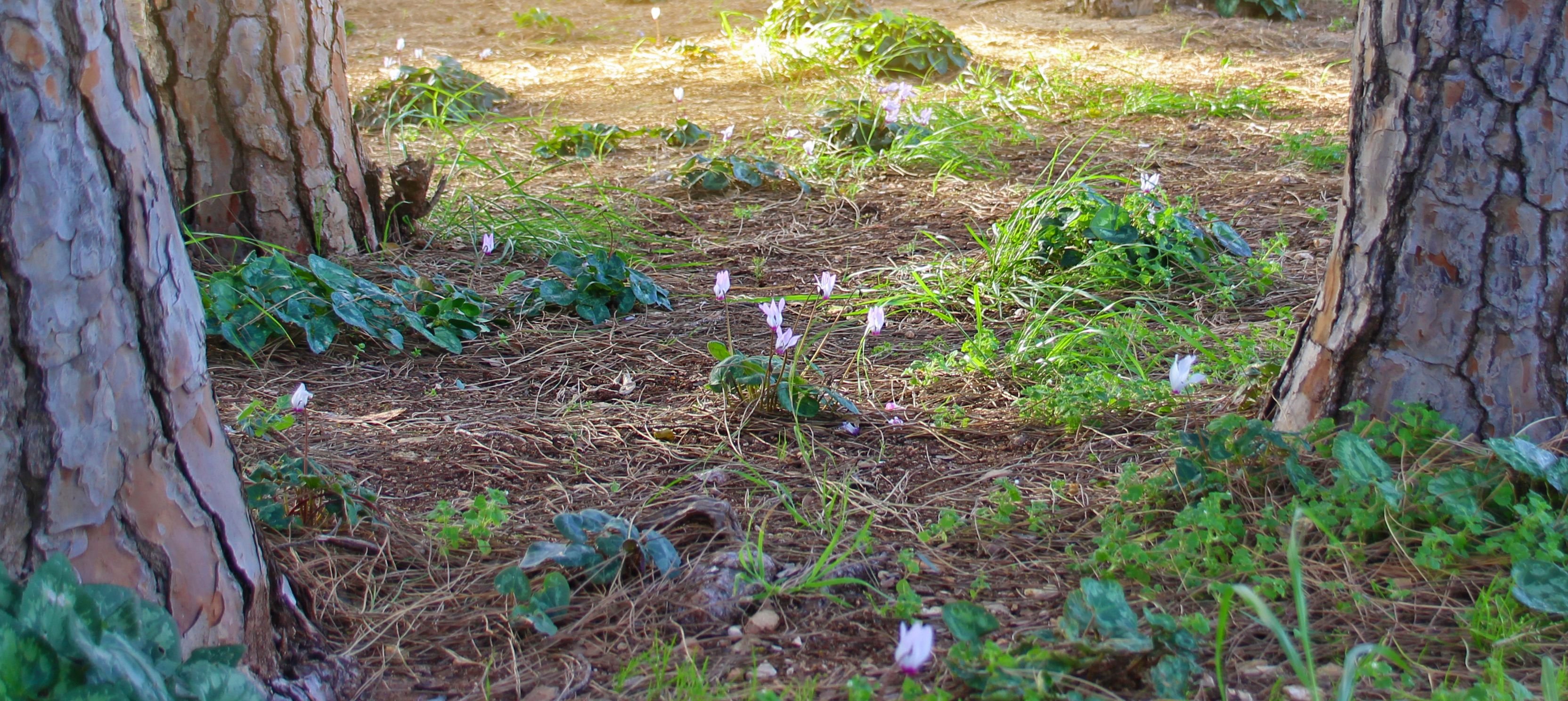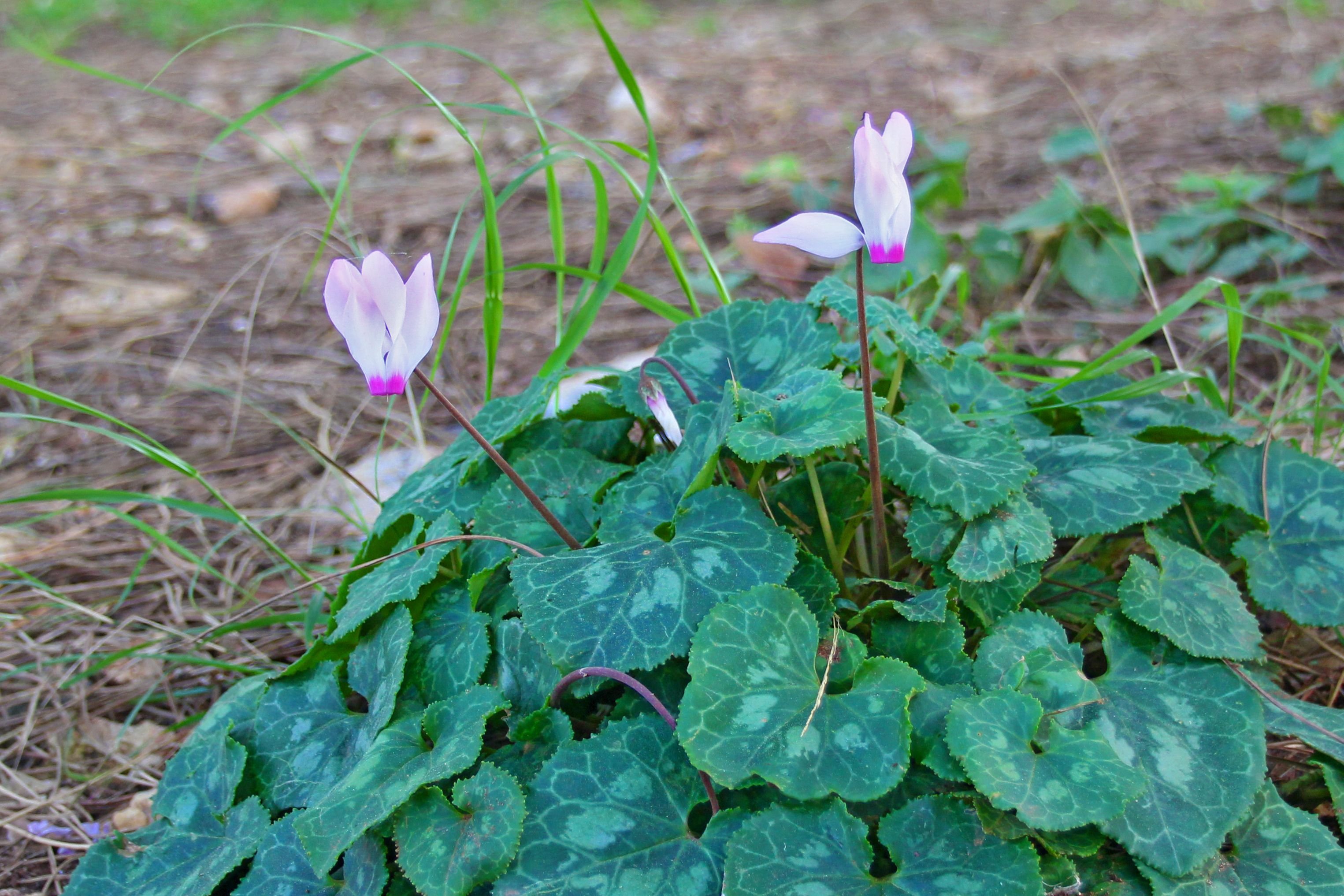Cyclamen persicum (the Persian cyclamen) blossoms almost all winter - from November to April and doesn't depend on the weather.

Blossoms in forests in shade and on sunny lawns. In the shade it usually has larger leaves and on the lawns the leaves are smaller. By the way, these leaves can be eaten as well as grape for stuffing. But only after boiling in hot water. In its raw form the leaves of cyclamen are poisonous.

The tuber of the cyclamen is not poisonous, it is very nutritious and quite large like a potato. Wild boars are very fond of digging cyclamen tubers and often in the forest one can see these "excavations". Unfortunately in places where there are a lot of wild boars cyclamen has already become scarce... But the plant has learned to hide from wild boars and often grows on rocks or in crevices where it can not be approached.

Bedouins likes this plant, but not for beauty. From the cyclamen tuber, the Bedouins squeeze out the juice that their hands lubricate during the shearing process. Juice performs the role of degreasing like a soap, so it is easier to cut. Therefore, one of the popular Arabic names of the cyclamen is "Sabun Ryan". What does it mean "Sabon Royim" - soap shepherds.

In Hebrew - Rakefet - the flower also took from the Arabian - "rakaf". But there is also a popular Hebrew name - Nezer Shlomo - crown (wreath) of King Solomon.

The seeds of cyclamen grows in a small brown ball. Ripe seeds take root and only in the third year the first flowers appear in the young cyclamen. Therefore, near the blossoming large "flowerbed" you can see many young leaves while there are no flowers.

| Location | Haifa, Israel |
| Camera | Canon EOS 1200D |
| Lens | Sigma 18-250mm f/3.5-6.3 DC Macro |
